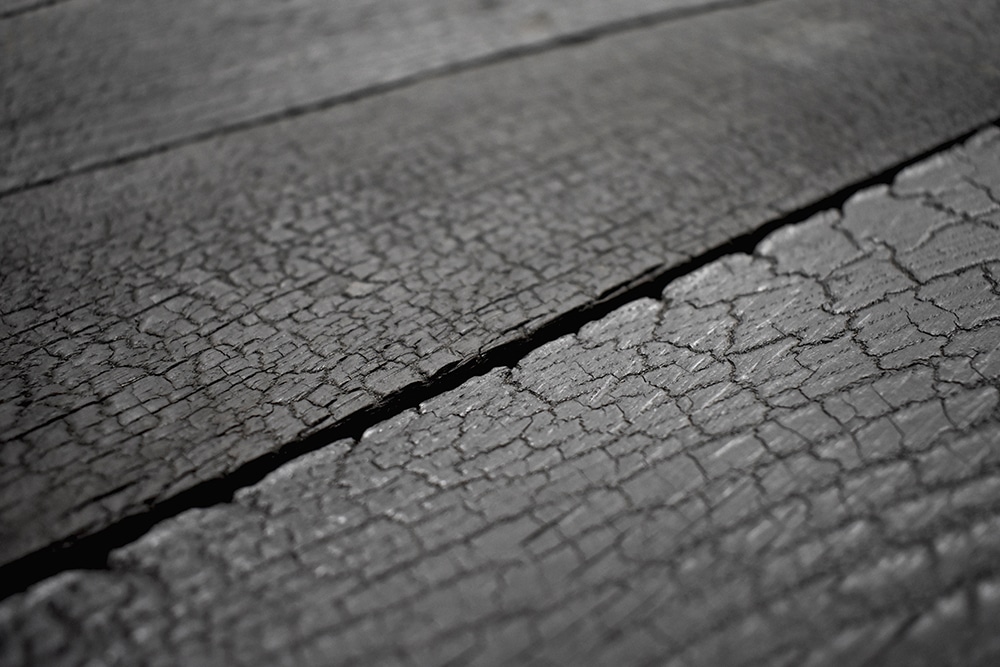5 Benefits of Charred Timber Cladding
For the past century, brick and concrete construction have been the primary building materials. Before this, wooden beams and timber cladding were far more commonplace across Europe and Asia.
A growing awareness of sustainability and the natural environment is causing change. An increasing number of architects and building developers looking back to this tradition of using timber as a construction material. This was clearly illustrated in the high number of timber-clad buildings that were winning entries in the 2020 Homebuilding and Renovation Awards.
Yakisugi; the Tradition of Charring Timber
Across Europe, oils, varnishes and other protective finishes are typically applied to exterior timbers. These help to preserve the wood and increase resilience against the elements. In Japan, a different means of protection was developed centuries ago; Yakisugi.
Yakisugi, the tradition of charring timber was developed as a wood preservation technique. The Japanese discovered that by creating a deep, controlled burn on the surface of Japanese Cedar panels, they could increase its durability. What’s more, the Japanese burnt timber cladding proved resistant to fire and burrowing insects.
Whilst developed as a practical solution, charred timber cladding has a striking dark finish which is now taking centre stage in contemporary design.
Exterior Solutions Ltd has a dedicated team who have learnt the art of Yakisugi. Using a range of controlled techniques, we have created the Shou Sugi Ban® range. With a variety of colours and finishes, we have become a renowned charred timber cladding supplier. Our timbers are used on prestigious development and renovation projects across the UK.
Here we identify the 5 benefits of charring timber cladding.
Weatherproof Charred Timber Cladding
Timber is organic, naturally strong and durable, but also hygroscopic. This means it expands and contracts in response to changing moisture levels. If exposed to the changing seasons of Europe or Japan, it cracks, warps and rots.
Applying oils, varnishes, paints and other protective coatings creates an outer barrier. This helps to protect the timber. There are highly effective products on the market, but these need to be reapplied regularly to maintain weatherproofing.
In Japan, they char the timber. The controlled burning of the wood draws out natural resins and leaves a layer of carbon on the surface. As it is part of the timber, not an additional coating, this weatherproofing system is long-lasting.

Charred Timber Repels Insects
Deterioration can also be caused by biological sources including insects, mould and fungi.
We have all seen examples of wooden beams with holes created by wood burrowing beetles (woodworm) or rotting wooden window frames. Coatings can be applied to reduce the risk of infestations. These are not needed on charred timber cladding, as the carbon outer layer is a deterrent to insects.
As for mould and fungi, they need very specific moisture and oxygen levels to grow. Techniques such as kiln drying timber, applying protective coatings or charring minimise the risk that these conditions will occur.
Charring Enhances the Fire Resistance of Timber Cladding
It goes against expectations, but the process of charring timber increases its resilience to burning. The controlled process removes the soft outer cells, which are quick to ignite. The tough, lignin cells, are revealed and these require a considerably higher temperature to ignite.
This means charred timber has different thermodynamic conductivity to untreated timber. With just concerns about the fire resistance of timber cladding, we offer an additional fire retardant treatment if required.
Added Strength
Another surprising benefit is that charring timber adds to its strength. It seems strange that removing an outer layer strengthens the wood, but the process draws out moisture. This results in a stronger end product.
The Aesthetic Appeal of Charred Timber Cladding
Finally, the finished effect of charred timber is highly desirable and can make quite an impact! Variety is achieved by using different tried and tested timbers and varying the brushing and finishing process.
Our Shou Sugi Ban® range includes burnt larch and Douglas Fir. When charred, these create a strong definition between the wood and grain. For a contemporary twist, we can infill the grain with any RAL colour to create a bespoke finish. This technique has been popular for bold exterior and interior design.
For a traditional look, cedar timbers can be charred and either left with a crackled charred finish, lightly brushed to create a smooth finish or heavily brushed to define the grain.
Yakisugi in Summary
With its roots in history, charred timber cladding offers an appealing building material for contemporary buildings.
If you would like to find out, please contact Exterior Solutions, charred timber cladding suppliers, on 01494 711800. Used in both interior and exterior application, we can answer your questions about this practical, sustainably-sourced, renewable and stunning construction material.






